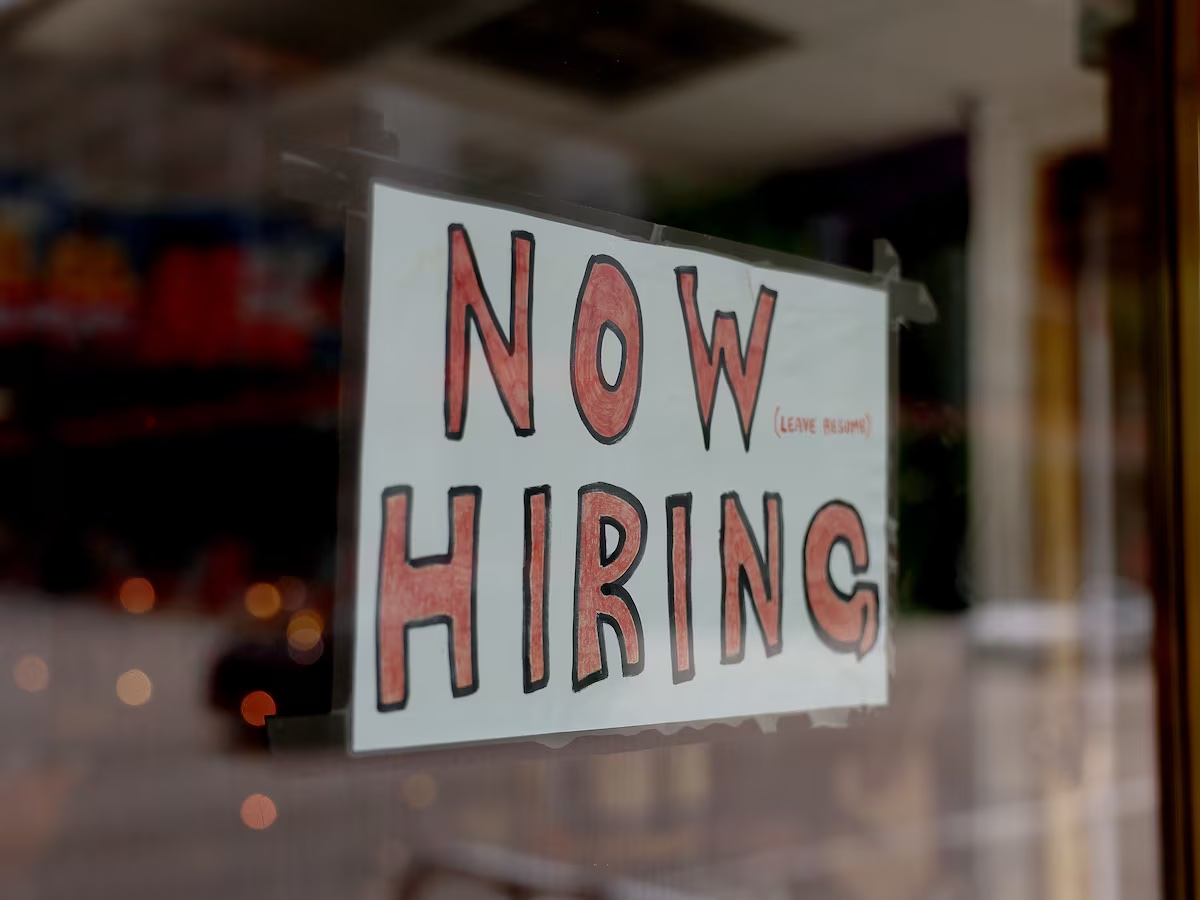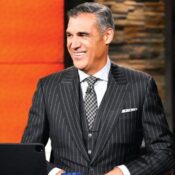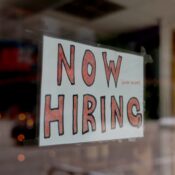
US job growth slows as firms are left in limbo due to tariff uncertainty
The Trump administration’s import tariffs caused a slowdown in U.S. employment growth in May, but strong pay growth should keep the economy expanding and maybe allow the Fed to postpone interest rate decreases.
Sharply downward adjustments that revealed 95,000 fewer jobs were added in March and April than previously projected for the two-month period highlighted the Labor Department’s report on Friday, which showed a slowing labor market momentum.
For the third consecutive month, the unemployment rate remained at 4.2% due to 625,000 people quitting the labor force, indicating a lack of trust in the job market. In the case of a layoff, consumers are less confident about their chances of finding employment, according to surveys.
Businesses’ capacity to plan ahead has been hindered by President Donald Trump’s vacillating on import levies, according to economists. Elon Musk, a tech entrepreneur, and conservative Republicans in the U.S. Senate have opposed Trump’s tax-cut and spending plan, which has further increased uncertainty for businesses.
“The more government spending cuts and tariff uncertainty persist, the worse the labor market reports will be,” stated Scott Anderson, chief U.S. economist at BMO Capital Markets. “Cracks in the façade of labor market resilience are now starting to show.”
The Bureau of Labor Statistics at the Labor Department said that nonfarm payrolls climbed by 139,000 jobs last month following a downwardly revised increase of 147,000 jobs in April.
Following a previously reported increase of 177,000 employment in April, Reuters questioned economists who said they expected the establishment survey to reveal an additional 130,000 jobs. March’s payroll total was reduced by 65,000 to 120,000.
Payrolls last month increased by a scant 44,000 jobs, according to economists, after accounting for the steep downgrades to March and April figures. The changes reduced the three-month average of employment gains from 155,000 in April to 135,000.
About 100,000 new jobs must be created each month by the economy to keep up with the increase in the working-age population. Trump’s administration’s immigration enforcement has resulted in the revocation of hundreds of thousands of migrants’ temporary legal status, which might cause that number to decline.
With 62,000 new jobs split throughout hospitals, ambulatory services, and skilled nursing care facilities, the healthcare industry continued to grow in employment. Some economists hailed the hiring at bars and restaurants as a sign of the economy’s resiliency, as it drove a 48,000 increase in leisure and hospitality payrolls.
There was a 16,000 rise in employment for social assistance. Payrolls for construction increased by 4,000, but residential specialty trade contractors lost their jobs. These losses were ascribed by economists to the drying up of employment prospects due to tariffs.
In the industries of wholesale trade, transportation, and warehousing, there were also modest increases in employment.
But in the midst of the White House’s historic push to significantly cut the agency’s footprint, federal government payrolls fell by 22,000 and have now dropped 59,000 since January. Additionally, a federal judge has banned the mass firings. Employers count reinstated employees who are placed on paid leave. Those who have accepted buyout proposals are no exception.
Manufacturing lost 8,000 jobs, primarily in the manufacturing of machinery. Retailer job losses also occurred. Jobs for temporary assistance, a sign of future hiring, fell by 20,200.
Industries’ employment-growth share fell from 51.8% in April to 50.0%, a 10-month low. Businesses hoarding workers, which stabilizes the labor market and economy through higher salaries, is the main cause of job growth.
Hourly wages gained 0.2% in April and then grew by 0.4%. To match the advance in April, wages increased 3.9% in the 12 months ending in May.
Wall Street stocks continued to rise. The dollar rose in value relative to a currency basket. Bond yields in the US increased.
WEAK EMPLOYMENT IN THE HOME
The hesitancy of employers to fire employees may prevent the U.S. central bank from acting until the end of the year.
Financial markets anticipate that the Fed will resume policy easing in September after holding a policy meeting later this month when it would maintain its benchmark overnight interest rate in the 4.25%–4.50% range.
Sarah House, a senior economist at Wells Fargo, stated that “the policy uncertainty that has made firms cautious to hire has also made them cautious to let go of workers.”
“With inflation expected to move up in the coming months, we suspect the Fed will need to see more marked, and sustained weakness in employment before reacting to deteriorating labor market conditions.”
The household survey that provides the jobless rate also showed signs of labor market cracks. Trump’s immigration crackdown was blamed by some economists for the labor force fall, which led to a 696,000 job loss in household employment. Unemployment among households rose by 71,000.
Perhaps as a result of a “chilling effect” from immigration policy, Michael Gapen, chief U.S. economist at Morgan Stanley, stated that “flows from employment to not in the labor force stepped up sharply from 4.4 million to 5.4 million.” “This in part explains why the participation rate fell.”
Primarily among prime-aged individuals, the labor force participation rate fell from 62.6% in April to 62.4%. As a gauge of an economy’s capacity to generate jobs, the employment-to-population ratio fell from 60.0% in April to 59.7%.
For economic reasons, fewer people were working part-time, but more people were working part-time since it was their only option.
Those unemployed for fewer than five weeks were more numerous, even though the median period of unemployment decreased to 9.5 weeks after rising to 10.4 weeks in April.
A revised survey sample was introduced, and the government adjusted certain figures in the April household survey. These adjustments raised questions over the validity of the statistics amid staff reductions, even though they had no effect on the unemployment rate, labor force participation rate, or employment-population ratio.
“If not for the decline in labor force participation, the unemployment rate would have increased to 4.3%,” stated Skanda Amarnath, Employ America’s executive director. “The participation decline is disguising what was marginal deterioration in employment and the labor market in May.”
All Categories
Recent Posts
Tags
+13162306000
zoneyetu@yahoo.com



